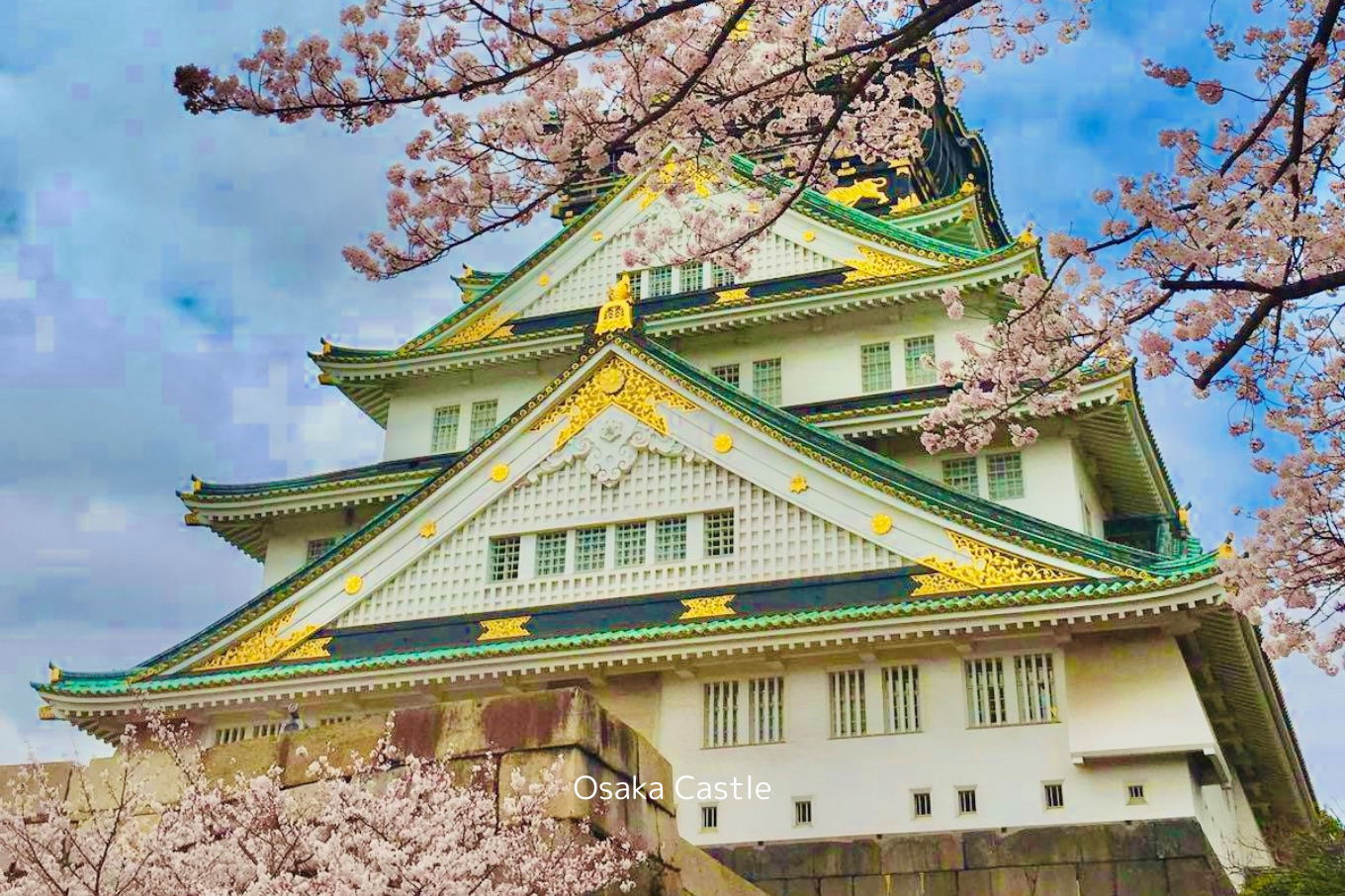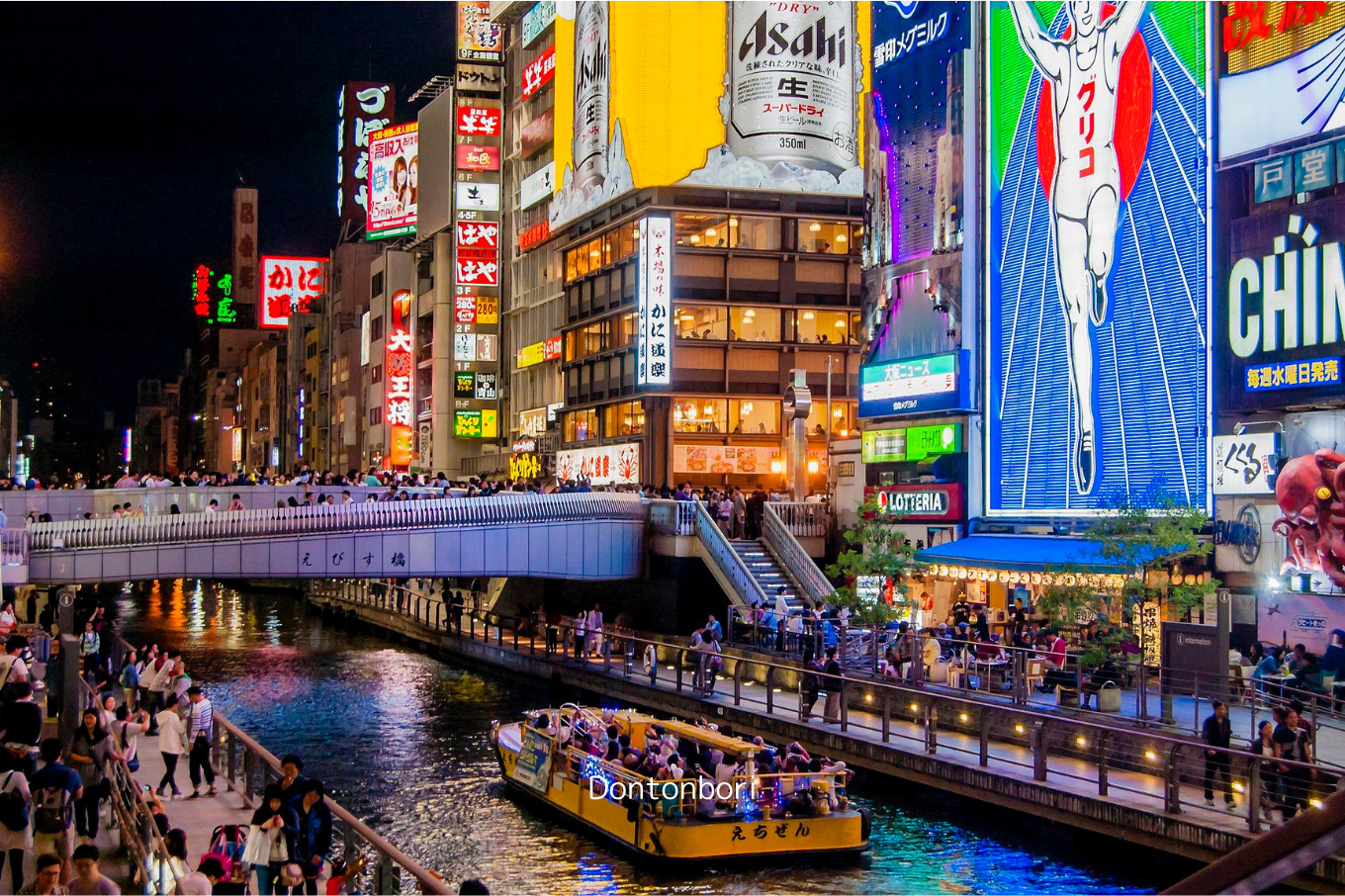OSAKA (Osaka Castle, Dotonbori, Sumo Experience)
Osaka Castle, Osaka’s historical and cultural symbol
Osaka Castle was built in 1583 by Toyotomi Hideyoshi, the feudal lord and warrior who unified Japan. He was obsessed with gold, so he ordered that gold had to be applied to furniture, armors and to the exterior of the Main Tower, the symbol of Osaka Castle, which hosts a museum and a viewing platform from where you can enjoy a fantastic view of Osaka city. The Castle is also famous for the impressive size of its stone wall, massive moats with a width of 70-90 meters and its Park featuring 1250 trees, 600 of which are cherry blossoms. In spring the Park becomes a very popular cherry blossom viewing spot, literally an oasis of Sakura attracting tourists from all over the Country.

Dotonbori, Osaka’s most dynamic and delicious district
The name “Dotonbori” refers both to the Dotonbori Canal and to Dotonbori Street which runs parallel to the Canal. Dotonbori District, besides being a gourmet paradise, is one of the most popular sightseeing spots in Osaka for its vibrant nightlife and spectacular neon lights. Dotonbori Street is dotted with food stalls, here you can eat traditional okonomiyaki and Takoyaki, but also tasteful pufferfish and crab cuisine at specialized restaurants featuring extravagant signage such as giant pufferfish, octopus and its worldwide-renowned mechanical orange crab. The most famous billboard and meeting and sightseeing spot is the Glico running man above Ebisubashi Bridge, which represents a man running on a blue track with his arms raised in victory.

Sumo, Japan’s national sport
Sumo is part of Japanese culture since it is one of Japan`s most famous martial arts. It flourished during the Edo Period (1603-1868) but its fascinating origins lie in Shinto (Japanese indigenous religion). Sumo was born as a ritual in which Shinto deities were invoked for a rich harvest and this explains why many contemporary Sumo rituals come from Shinto ones. Moreover, Sumo is renowned for its strict hierarchical system and Sumo wrestlers are seen as contemporary samurai following “Sumodo”, “the way of the wrestler”. The fight consists of two sumo wrestlers wearing a mawashi (loincloth), face each other in a dohyo (circular ring) and try to push and throw his opponent. Every year, for two weeks in March, one of the biggest sumo tournament events are held in Osaka.

